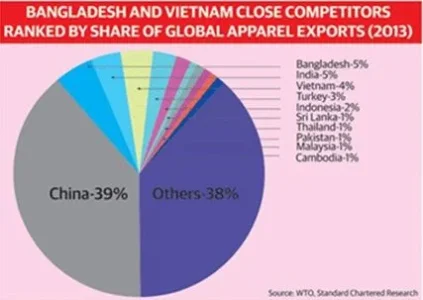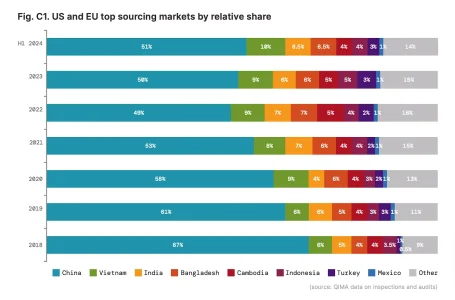- Joined
- Jul 3, 2024
- Messages
- 792
- Likes
- 374
China, ASEAN fully complete negotiations on CAFTA 3.0 upgrade
China and 10 ASEAN countries have fully completed negotiations on the Version 3.0 China-ASEAN Free Trade Area (CAFTA), a milestone in bilateral trade cooperation that will inject greater momentum and stability into the world economy.The achievement was announced during a special online meeting of economic and trade ministers from China and ASEAN on Tuesday, according to China's Ministry of Commerce.
CAFTA 3.0 will send a strong signal in support of free trade and open cooperation, said the ministry, noting that the agreement will inject greater certainty into regional and global trade, and serve as a model for openness, inclusiveness and win-win cooperation.
Launched in 2010, the CAFTA, the world's largest free trade zone among developing countries, has undergone continuous upgrades, with its Version 2.0 agreement signed in 2015 and coming into effect in 2019.
With negotiations for CAFTA 3.0 now concluded, both parties will strive to formally sign the CAFTA 3.0 upgrade protocol before the end of this year, the ministry revealed.
Exemplifying cooperation across the Global South, the conclusion of CAFTA 3.0 negotiations will greatly enhance China-ASEAN cooperation concerning industrial capacity, technology and trade, while boosting ASEAN countries' economic growth and industrialization, said Feng Gui, a law professor at Guangxi University of Finance and Economics in south China.
According to the commerce ministry, CAFTA 3.0 will introduce nine new chapters covering areas such as the digital economy, the green economy and supply chain connectivity.
These new chapters are major breakthroughs as they will help China and ASEAN promote broader and deeper regional economic integration under new circumstances, and will facilitate the integration of their industrial and supply chains, the ministry said.
In particular, the establishment of supply chain connectivity rules under CAFTA 3.0 marks a new milestone in supply chain cooperation between the two sides, as these rules will effectively facilitate the flow of critical goods and services while enhancing infrastructure connectivity, said Zhang Xiaojun, vice president of Southwest University of Political Science and Law in Chongqing Municipality.
"These rules will not only optimize the efficient cross-border flow of production factors but also provide institutional support for building secure and stable supply chains," Zhang explained.
According to multiple experts, the digital economy will be another key sector to benefit from CAFTA 3.0, as closer cooperation under the agreement will help bridge the digital gap between China and ASEAN countries, paving the way for further economic integration.
China's experience in digital infrastructure development is expected to provide significant investment and technological support to ASEAN nations, and create more opportunities for small and medium-sized enterprises, said Chen Zhe, an associate professor at the School of International Law of Southwest University of Political Science and Law.
Negotiations for CAFTA 3.0 have surpassed China's previous free trade agreements in both scope and depth, demonstrating the country's resolve to deepen openness in the digital economy sector, Chen added.
"CAFTA 3.0 will not only strengthen economic and trade cooperation between China and ASEAN countries, but also underscore China's proactive stance in actively shaping international digital trade rules and advancing global digital economic development," Chen noted.
Home to nearly a quarter of the world's population, China and ASEAN had by 2024 been each other's largest trading partner for five consecutive years. Bilateral trade value soared from less than 8 billion U.S. dollars in 1991 to nearly 1 trillion dollars in 2024.
Data from the General Administration of Customs showed that in the first four months of 2025, trade between China and ASEAN had reached 2.38 trillion yuan (about 330.85 billion U.S. dollars), up 9.2 percent from a year earlier.
ASEAN and China can further deepen their partnership, achieve high-quality common development, promote cooperation in areas such as intelligent manufacturing, and enhance connectivity and green transformation, Kao Kim Hourn, secretary-general of ASEAN, said at Tuesday's meeting.
Experts emphasized that the conclusion of CAFTA 3.0 negotiations will further strengthen the institutional framework for economic and trade cooperation between China and ASEAN, exploring a rule-based approach to cooperation. The CAFTA, through the integration of rules and standards, breaks away from the traditional models of rule- and standard-setting dominated by developed nations.
Feng said that in an era marked by global trade protectionism and decoupling, China and ASEAN, as friendly neighbors and models of economic cooperation, are providing new support for the global multilateral trade system.
"China is willing to work with ASEAN to maintain the stability and smooth operations of global industrial and supply chains, make greater contributions to the development of both sides, and safeguard international fairness and justice," said China's Commerce Minister Wang Wentao.







